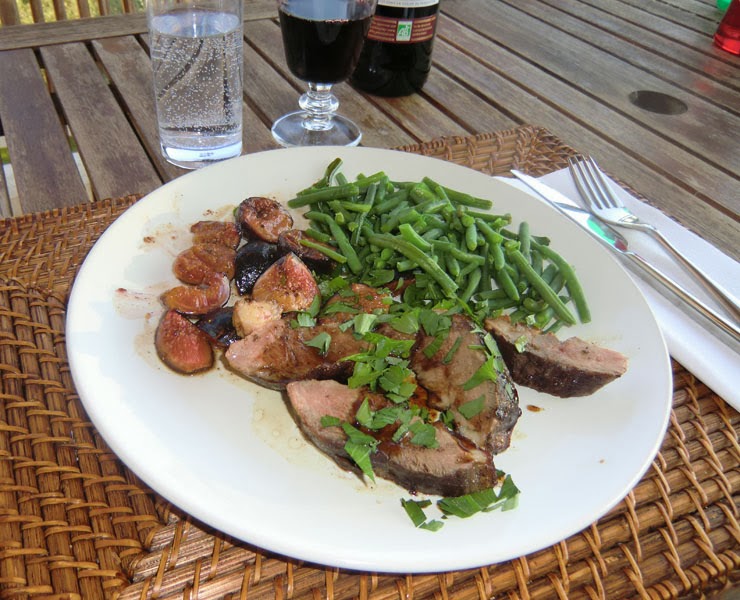My best rabbit recipe

The traditional diet of the majority in the arrière-pays, in the mountains behind Nice, has always been rather meat-poor. Meat was a special treat used sparingly for Sundays and holidays. Of course the hunters took the occasional hooved game, but birds and rabbits were more frequently the prize. Hunting is still a popular pastime in the arrière-pays, and hikers are advised to wear colourful clothes and stay on the marked trails during the hunting season. Nowadays, rabbit is also very popular on the French Riviera, and farm-raised rabbit is easy to find in local supermarkets.
Rabbit meat is lean and delicate, a bit like chicken. It needs to be simmered an hour in a heavy casserole, my trusted Le Creuset is super for this.
2 servings
- 2 rabbit legs (cuisses de lapin)
- 5-6 spring onions,
- 2 cloves garlic, minced
- 2 tasty tomatoes
- 100 ml white wine
- Juice and zest of ½ orange
- 2 tbsp rapeseed oil
- 1 bay leaf
- A sprig of rosemary or thyme
- Freshly ground black pepper
- Black olives
- Fresh basil leaves to decorate
Heat the rapeseed oil in a heavy casserole, and fry the rabbit legs on both sides until golden brown. Clean the spring onions and discard the green parts. Add the spring onions and garlic to the casserole. Add the white wine, zest and juice of ½ orange, bay leaf and rosemary. Grind a few rounds of black pepper in the casserole.
Cover the casserole and reduce the heat.
Let simmer for about ½ hour turning the legs and stirring regularly. Chop the tomatoes into quarters and add to the casserole. Continue simmering for ½ hour longer.
Meanwhile cook quinoa. I prefer to serve quinoa, because it best compliments this rabbit casserole.
Decorate with black olives and fresh basil leaves.


















0 comments:
Note: only a member of this blog may post a comment.